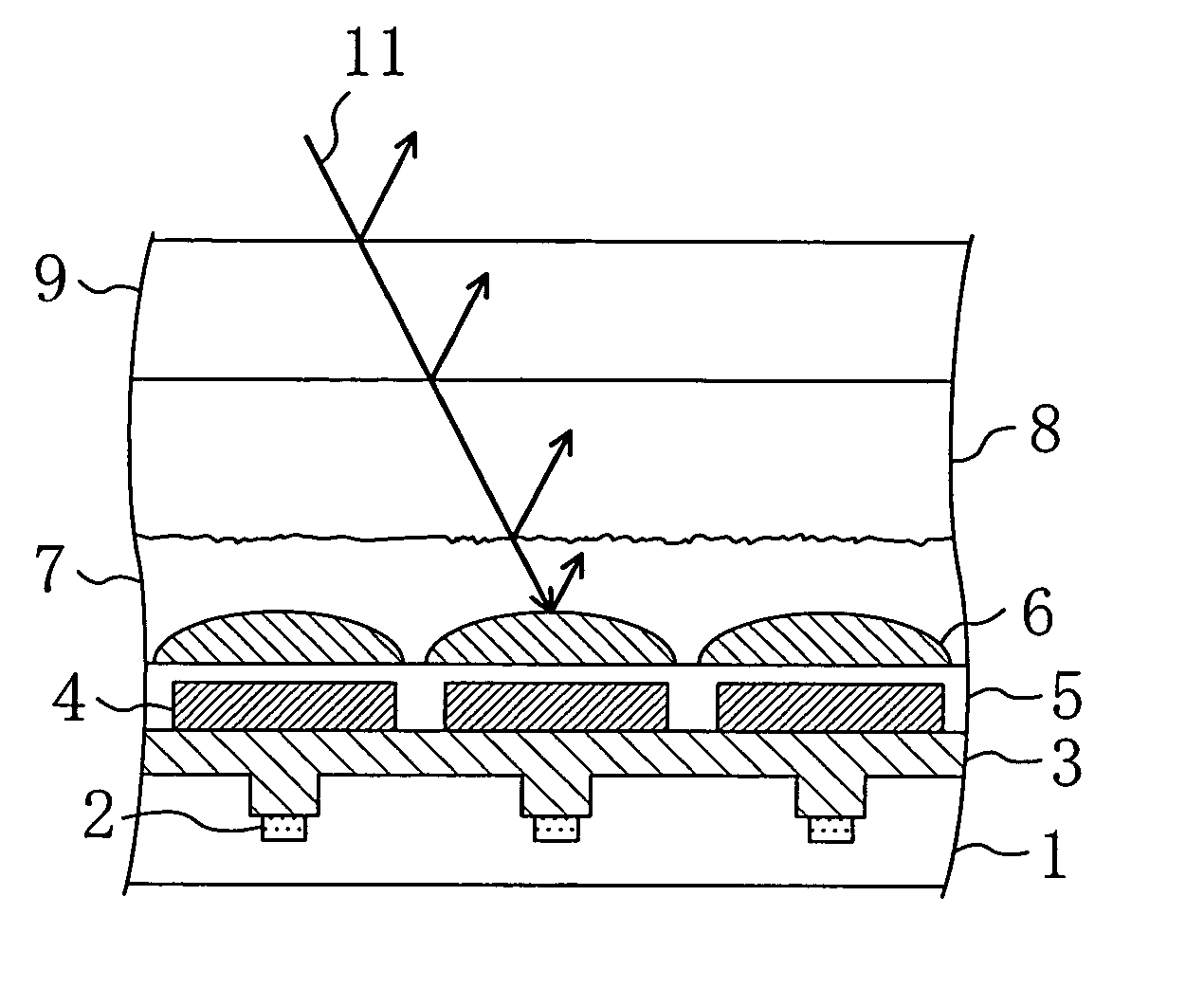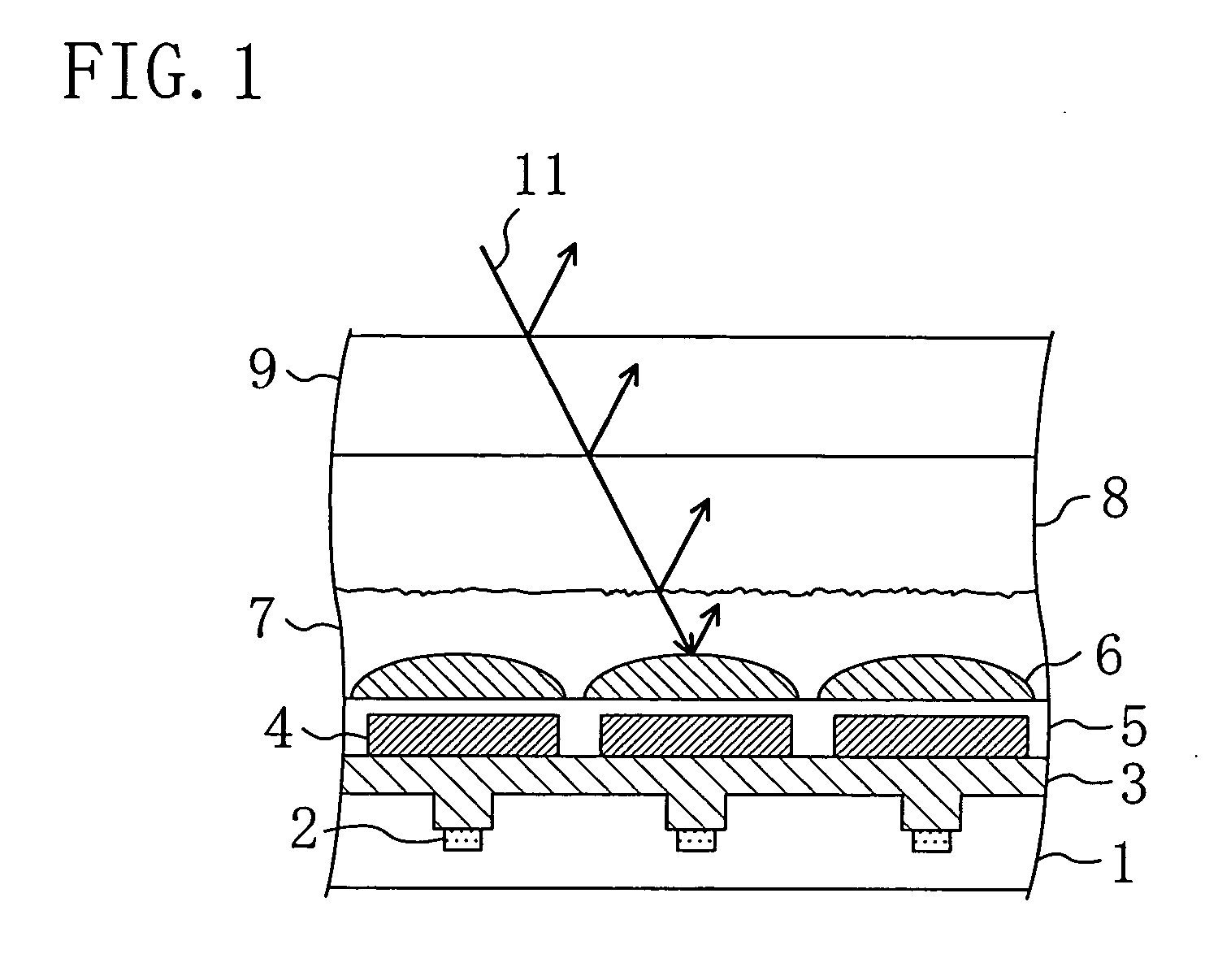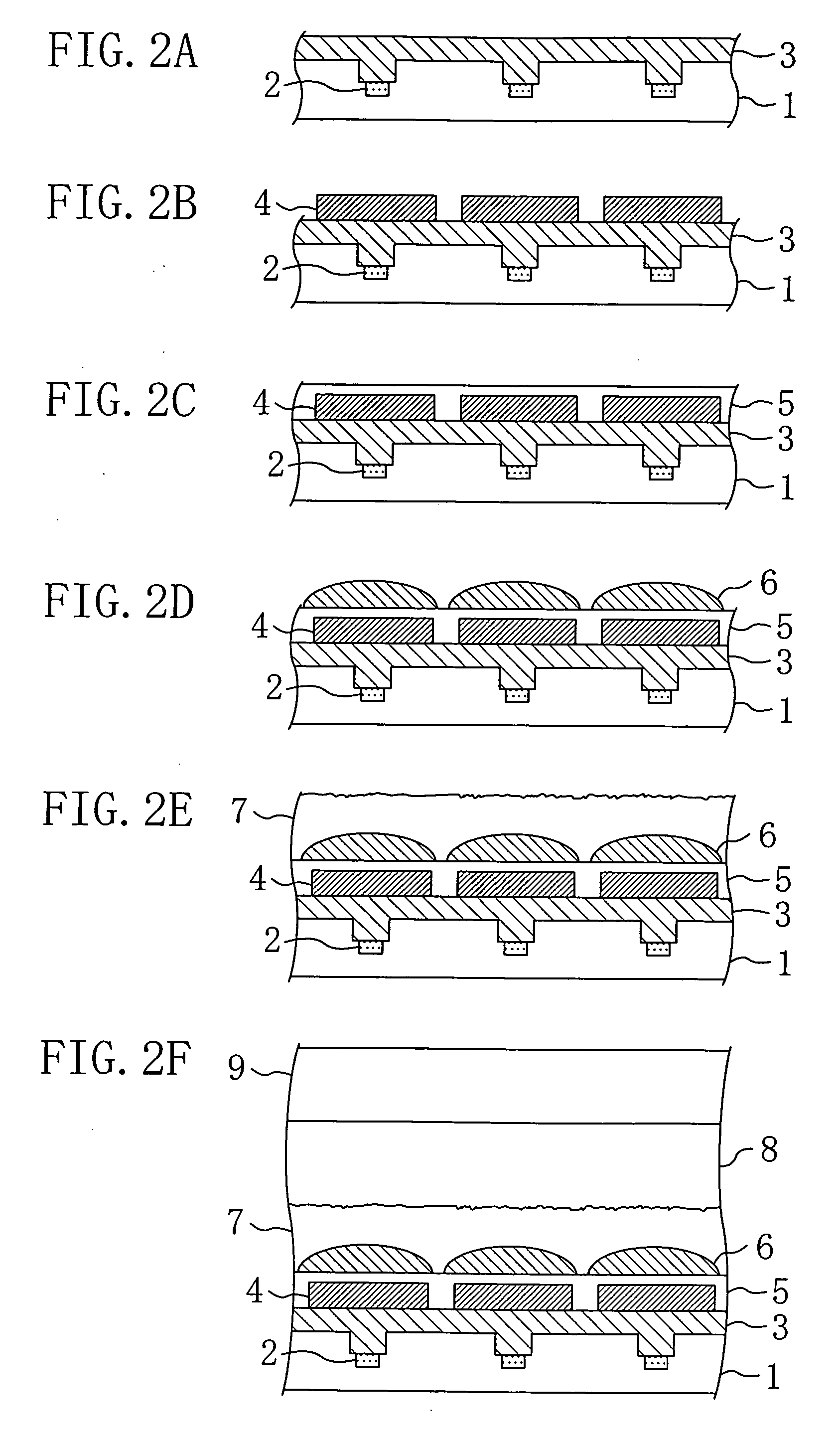Solid-state image sensing device and method for fabricating the same
a solid-state image and sensing device technology, applied in the direction of radioation control devices, television system scanning details, television systems, etc., can solve the problems of changing some of the conforming devices to defective ones, and achieve the effects of reducing the amount of reflected light, preventing the occurrence of defects resulting from dust or the like, and enhancing the sensitivity of the solid-state image sensing devi
- Summary
- Abstract
- Description
- Claims
- Application Information
AI Technical Summary
Benefits of technology
Problems solved by technology
Method used
Image
Examples
first embodiment
[0054] Hereinafter, a solid-state image sensing device and its fabrication method according to a first embodiment of the present invention will be described with reference to the accompanying drawings. Unless otherwise specified, the drawings illustrate the state of the device after a wafer is separated (diced) into the solid-state image sensing devices of individual element (chip) form.
[0055]FIG. 1 shows a cross-sectional structure of the solid-state image sensing device according to the first embodiment. FIG. 1 concurrently shows how light comes in microlenses of the solid-state image sensing device according to the first embodiment.
[0056] Referring to FIG. 1, in the surface of a substrate 1 for a CCD-type solid-state image sensing element, a recess is provided on each pixel. At the bottom of the recess, a photodiode 2 is provided which converts an incoming light into an electrical signal. On the substrate 1 for the solid-state image sensing element, a first acrylic flattening f...
second embodiment
Modification of Second Embodiment
[0107] Hereinafter, a solid-state image sensing device and its fabrication method according to a modification of the second embodiment of the present invention will be described with reference to the accompanying drawings. As compared to the second embodiment, a characteristic of this modification is that a spacer in the present invention is provided between a pixel area and an amplifier unit arranged around the pixel area, and that the spacer is provided with an opening not to face the amplifier unit.
[0108]FIG. 12 exemplarily shows a schematic circuit structure of a solid-state image sensing device, specifically, an interline-transfer CCD solid-state image sensing device intended to apply this modification. As shown in FIG. 12, an image sensing region (pixel area) 63 of a CCD solid-state image sensing device 51 is composed of a plurality of light receiving units (photoelectric conversion units) 61 and a plurality of vertical transfer registers 62. ...
PUM
 Login to View More
Login to View More Abstract
Description
Claims
Application Information
 Login to View More
Login to View More - R&D
- Intellectual Property
- Life Sciences
- Materials
- Tech Scout
- Unparalleled Data Quality
- Higher Quality Content
- 60% Fewer Hallucinations
Browse by: Latest US Patents, China's latest patents, Technical Efficacy Thesaurus, Application Domain, Technology Topic, Popular Technical Reports.
© 2025 PatSnap. All rights reserved.Legal|Privacy policy|Modern Slavery Act Transparency Statement|Sitemap|About US| Contact US: help@patsnap.com



